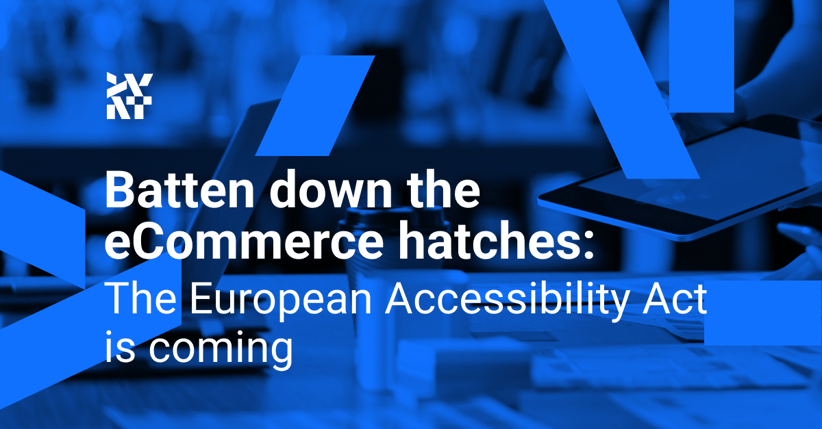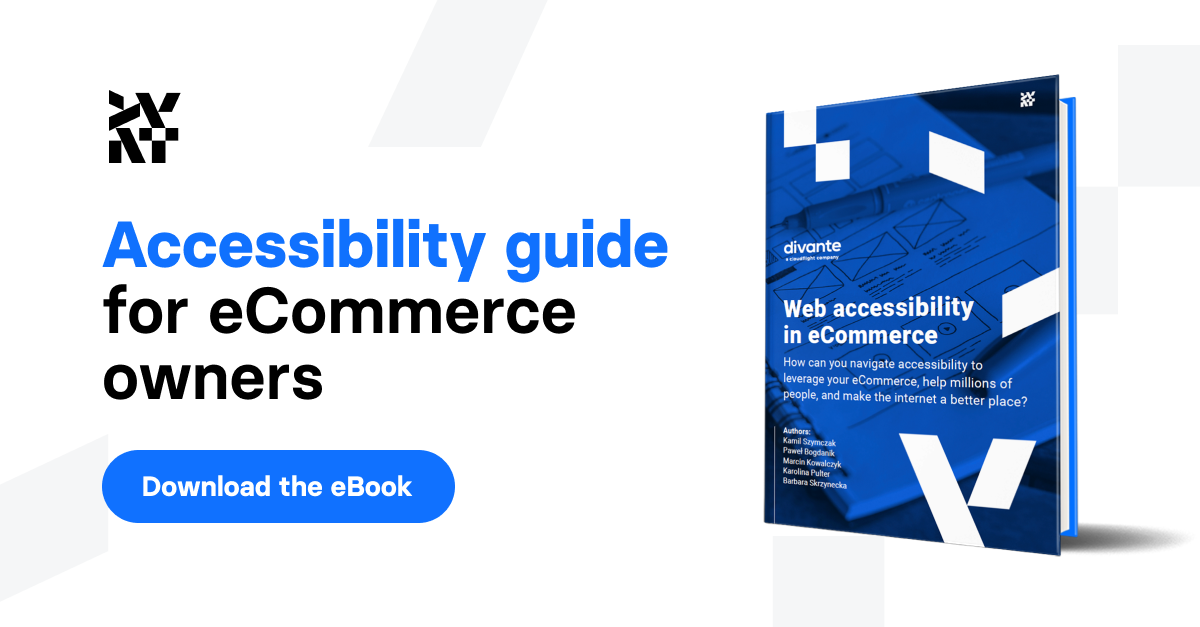The European Accessibility Act (EAA), also known as Directive 2019/882, came into effect in April 2019. EU member states needed to have passed implementation laws by June 2022, and, by June 2025, they must ensure the implementation of the necessary accessibility measures.
The main goal of this legislation is to increase and standardize the accessibility of digital products and services, especially for people with disabilities and functional limitations, whether permanent or temporary. The legislation will affect 12 areas, including eCommerce and mobile apps. Not complying with the new regulation can result in an interim service suspension. If your business is operating in the EU, this is something that needs your attention because the clock is ticking.
This article is a part of our “Accessibility guide for eCommerce owners” eBook. If you want to learn how to prepare your business for the new regulations, download it here.
What exactly is the European Accessibility Act?
The EAA is a document that establishes accessibility standards to remove barriers that are faced daily by people with disabilities in the EU. These standards apply to, among others, websites and mobile apps, including eCommerce, computers and operating systems, payment terminals, ATMs, ticketing and check-in machines, smartphones, and eBooks. The EAA directive sets WCAG 2.1 Level AA as a standard that businesses need to comply with.
Complying with the WCAG
The WCAG is a collection of guidelines to make digital content accessible to people with disabilities. These disabilities could be permanent but also temporary or situational. The four main rules of accessibility that the WCAG and EAA focus on state that the interfaces need to be:
1. Perceivable
Users must perceive the information displayed in the interface, and the interface itself, with the available senses.
2. Operable
Users need to be able to use all the different controls and navigational elements of the interface.
3. Understandable
The content needs to be comprehensible and presented in a way that’s easy to grasp.
4. Robust
The content must be designed to allow users to use the technology of their choice to interact with it.
Building products and services with the above rules will ensure accessibility for all users. That’s true regardless of their habits, technical and cognitive skills, or levels of disability.
Does my business need to comply with the EAA?
The EAA covers all products and services sold or used in the EU. Even foreign-based companies must comply with the Act if they sell relevant products or services within the EU. However, the EAA does not cover microenterprises, which are businesses that employ fewer than 10 people and have an annual turnover of less than €2 million. Also, websites and mobile apps registered before June 28, 2025, don’t need to comply with the directive.
Penalty for noncompliance
The penalties for noncompliance need to be “effective, proportionate, and dissuasive.” Each EU member state is responsible for enforcing the directive on its territory. This means that they can independently decide on the penalties and appoint the body in charge of enforcement. For example, in Germany, the penalty for noncompliance might be pulling the product from the market or limiting its presence. In Poland, the product or service could also be withdrawn from the market, or the business could face a financial penalty of up to 10 times the average national gross pay.
Benefits
Besides avoiding penalties, compliance with the EAA will enable more people to access digital products and services. This kind of universal access translates into higher profits for businesses through, for instance, promoting online shopping.
This excerpt is just the beginning. Download our eBook to learn more about how to leverage accessibility to comply with the new law, improve your eCommerce, increase business results, and reach new customers.
Published May 23, 2023









